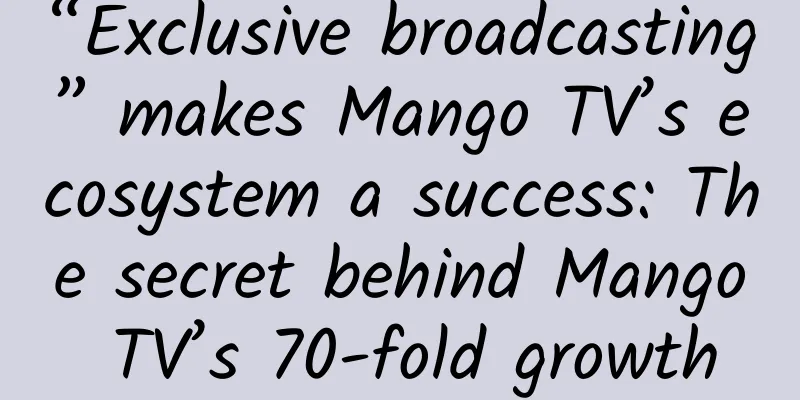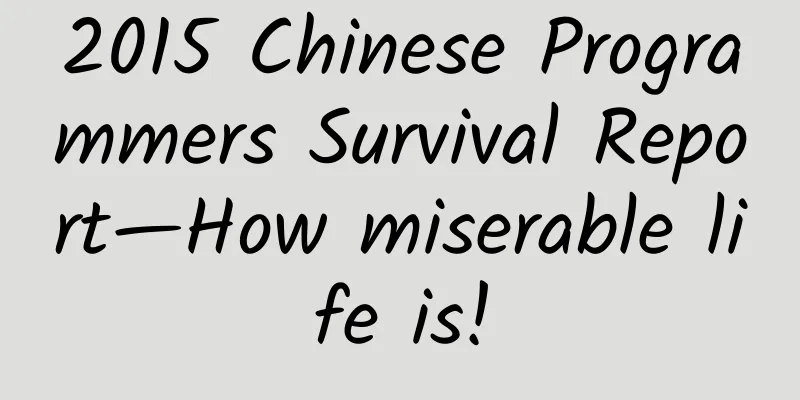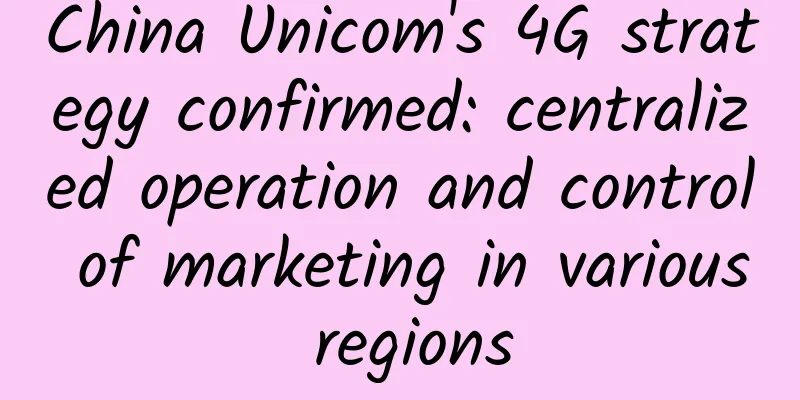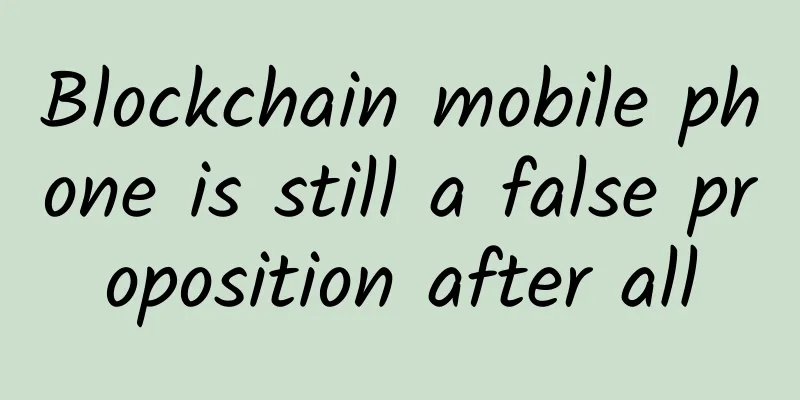Heisenberg’s student, Yang Zhenning’s mentor: Is he a genius or a paranoid?
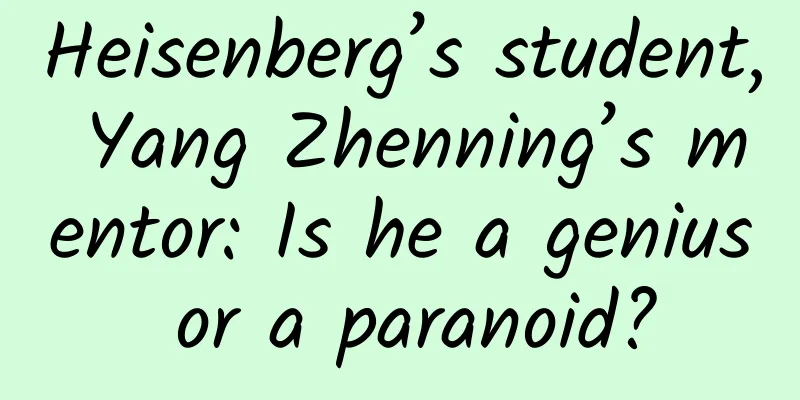
|
Edward Teller, this genius physicist, has both good and bad reputations throughout his life. He played an important role in the development of nuclear weapons and was called the "father of the hydrogen bomb" by many people. However, he did not recognize the contributions of others and strongly advocated the arms race, which made him criticized. Although Teller had outstanding talents, he was also paranoid. His testimony at the Oppenheimer hearings led to his isolation in the scientific community. His life symbolizes the greatness of scientific exploration and the complexity of human nature. Written by | Wang Shanqin In the history of nuclear weapons development, Edward Teller (1908-2003, also translated as "Teller") is an important figure that cannot be avoided, but this person is constantly controversial. He was the first scientist to advocate the manufacture of hydrogen bombs. Because of his important contribution to the design of hydrogen bombs, he was called the "Father of the Hydrogen Bomb" by some people; however, he did not recognize the important contributions of other collaborators, so he was criticized. He was also ignored by his former friends because he accused the "Father of the Atomic Bomb" Oppenheimer (J. Robert Oppenheimer, 1904-1967) at the hearing. Teller actively participated in the nuclear arms race and was regarded by some as a nuclear war maniac. In addition to his work in the field of nuclear weapons, Teller was an outstanding physicist and physical chemist, and a child prodigy. He had important collaborations with many physicists and chemists, and made important contributions to many important achievements. However, for various reasons, he failed to rank among the top physicists. Precocious boy Teller was born on January 15, 1908, into a Jewish family in Budapest, Austria-Hungary. His father, Miksa Teller (1871-1950), was a lawyer, and his mother, Ilona Teller (1883-1977), was named Deutsch. Teller's maternal grandfather, Ignác Deutsch (c. 1827-c. 1883), was a banker and entrepreneur who owned a cotton mill. [1] Teller's father and mother. 丨Image source: Public copyright Teller had an older sister, Emma Teller (1905-2001). Teller's family was well-off and had a cook, a maid and a nanny. Teller's sister, Teller and their mother. 丨Photo source: Lawrence Livermore National Laboratory Teller could not speak when he was 3 years old. His grandfather was worried and suspected that he had intellectual problems. One day after he turned 3, he suddenly spoke, not a single word, but a sentence. A friend of Teller's father found that Teller could easily crack the poker game of adults, so he said to him, "You will be known to the world in the future because of your genius son." Teller was very interested in numbers since he was young. His superior family environment gave him a good preschool education. He learned addition, subtraction, multiplication and division before he went to elementary school, and enjoyed mental arithmetic of large numbers. When Teller was 9 years old, his father hired a young woman who had lived in the United States for several years as the children's new nanny, on the condition that she must speak English to the children. This gave Teller a good English conversation environment since he was a child. Teller's mother was a pianist and wanted her son to have the qualities of a pianist in the future, so she taught him to play the piano since he was a child, and the piano became Teller's lifelong hobby. At that time, the Hungarian primary and secondary school system was 4 years of primary school and 8 years of secondary school. In 1918, after finishing the fourth grade, Teller entered the fifth grade of Minta High School in Budapest. His math teacher was the school principal and had a doctorate. One time during class, the math teacher solved an algebraic equation on the blackboard and was quite proud of it. Teller said he had a better way, so the teacher asked him to go to the blackboard to calculate. Teller indeed gave a better way. The math teacher was jealous and said to him: "Teller, it seems that you are a genius. But I don't like geniuses." [1] It was not until Teller's father discovered that Teller could easily help his sister solve algebra problems that he began to believe that his son was gifted, so he asked a friend who was a mathematics professor at the University of Budapest to examine his son. After the examination, the other party determined that Teller had a talent for mathematics. Teller's graduation photo from Minda High School in 1925. Image credit: Lawrence Livermore National Laboratory From Chemistry to Physics When he was about to graduate from high school, Teller planned to study mathematics at university. Teller's father strongly opposed it, thinking that he might not be able to support himself by studying mathematics. In 1925, Teller entered the University of Budapest. Before entering, he took the exams in mathematics and physics and obtained the highest scores in the class. On New Year's Day 1926, Teller left Hungary and transferred to the University of Karlsruhe in Germany to study chemical engineering. This was the most famous major in the school. His father won a temporary victory. Teller still studied mathematics in his spare time. While studying at the University of Karlsruhe, Teller attended a lecture on molecular spectroscopy by Herman Mark (1895-1992). Mark told Teller that new ideas in physics had fundamentally changed the frontiers of chemistry and introduced him to major breakthroughs in quantum mechanics. Teller became very interested in quantum mechanics and decided to switch to physics in the future. In the spring of 1928, Teller received a bachelor's degree in chemical engineering and entered the University of Munich to study physics under the world-renowned physics teacher Arnold Sommerfeld (1868-1951). On July 14, 1928, Teller took a tram to climb the mountain. He did not notice that the tram had arrived at the station, and when the tram started again, he immediately jumped out of the front door of the moving tram. Unfortunately, the wheel severed his right foot below the ankle. [1] Teller was taken to a hospital in Munich. The severe pain continued to torment him. In order to prevent the side effects of painkillers from interfering with his thinking, he stopped taking painkillers and used his willpower and psychological suggestion to deal with the pain: when he drank water, he repeatedly told himself that he was taking painkillers instead of water. A few months later, he wore a wooden prosthesis and walked with a limp from then on. In 1929, Teller transferred to the University of Leipzig, where his mentor was Werner Heisenberg (1901-1976). Heisenberg was also a student of Sommerfeld. He was only 28 years old at the time, but because he had established the matrix form of quantum mechanics (matrix mechanics) a few years ago, he was already one of the most outstanding physicists in the world at the time. Heisenberg asked him to use quantum mechanics to accurately calculate the energy level of hydrogen molecule ions (i.e. hydrogen molecules that have lost an electron). This topic involved complex calculations. Teller used a hand-cranked calculator to assist in the calculations. Each operation of the hand-cranked calculator would cause a noticeable sound. Teller was used to going to bed late and getting up late, so the noise was particularly noticeable in the dead of night. At that time, Heisenberg's single dormitory was on the floor above Teller's dormitory. Teller received his doctorate in 1930. He later joked that Heisenberg must have rushed him to graduate with a doctorate so that he could get a good night's sleep. Heisenberg said that was not the case. Teller was one of the first people to use quantum mechanics to accurately calculate hydrogen molecular ions. His work made a pioneering contribution to the application of quantum mechanics in molecular physics and also showed his potential to become one of the leading figures in physics. Early research After graduating with a doctorate, Teller was hired by the University of Göttingen as an assistant professor there. In the same year, Teller met Soviet physicists George Gamow (1904-1968), Lev Landau (1908-1968) and Czech physicist George Placzek (1905-1955), and became friends with them. In the summer of 1932, Teller briefly visited Enrico Fermi (1901-1954) and then returned to Germany. In January 1933, Hitler came to power. Teller returned to Budapest to visit his family in the spring of that year and then returned to Germany. At this time, a large number of professors with Jewish ancestry or whose family members had Jewish ancestry were fired or forced to leave their jobs. Germany had become unsafe for Jews at this time. With the help of his friends, Teller came to teach at University College London. He applied for a scholarship from the Rockefeller Foundation and came to the University of Copenhagen in Denmark in January 1934 to visit the physics giant Niels Bohr (1885-1962) and collaborate with him until August of that year. During this period, he married his girlfriend Augusta Maria Harkanyi (nicknamed "Mici" (1909-2000), whom he had known for many years. In September 1934, Teller returned to work at University College London. In January 1935, Teller received a letter from Gamow inviting him to be a professor of physics at George Washington University. At that time, Gamow had become the head of the Department of Physics at the University of Washington. So he came to the United States. From 1936 to 1940, Teller collaborated with Gamow, Landau, Hermann Jahn (1907-1979), Julian Schwinger (1918-1994), Charles Critchfield (1910-1994), John Wheeler (1911-2008), Gregory Breit (1899-1981) and others to study topics such as β decay[2] , sound propagation and attenuation [3] , spontaneous molecular symmetry breaking [4] , neutron scattering by hydrogen molecules [5] , nuclear force saturation [6] , selective thermonuclear reaction rates [7] , atomic nucleus rotation [8] , and hydrogen atom two-photon decay [9]. Except for the paper he collaborated with Wheeler, Teller was the second or third author in all other papers. The paper on β decay written by Teller and Gamow is an important achievement in the related field. This study proposed the "Gamow-Teller decay" model, which is different from the traditional "Fermi decay" model and still has important applications in nuclear physics and astrophysics. The paper written by Teller and Jahn obtained the famous Jahn-Teller theorem, which predicted the Jahn-Teller effect. This effect can lead to spontaneous breaking of molecular symmetry in some cases, namely Jahn-Teller distortion. The Jahn-Teller effect is widely present in the coupling phenomenon between low-energy electrons and atomic nuclei, and is therefore widely used in the study of molecular and solid-state systems, such as high-temperature superconductivity and the coloring of metal dyes. Teller also published a paper as the sole author in 1937[10], which generalized a work completed by Eugene Wigner (1902-1995) and John von Neumann (1903-1957) in 1929, extending it from single degree of freedom to multiple degrees of freedom, and obtaining a set of important topological possibilities. Later scholars further analyzed Teller's results and obtained the first example of "Berry's topological phase" in molecular physics. The Manhattan Project's Failures Teller began to pay close attention to the topic when the news of the discovery of nuclear fission first reached the American continent in early 1939. On November 21, 1939, Teller attended a meeting of the Uranium Advisory Committee established by President Roosevelt. In fact, Oppenheimer did not enter this field until January 1942, and only served as the "fast fission coordinator" under Compton's arrangement in May. (See "Oppenheimer outside the movie: He is not only the father of the atomic bomb, the world also owes him a Nobel Prize") It was in 1942 that Teller and Fermi discussed the prospect of nuclear war in a casual chat. Fermi casually suggested that since energy can be released through nuclear fusion inside stars, perhaps humans can also make bombs that fuse hydrogen, which was later called hydrogen bombs. Teller thought this plan was not feasible. But soon he felt that this plan could be realized, and he became obsessed with the research of hydrogen bombs. A few weeks after that casual chat, Teller formally proposed the idea of making a hydrogen bomb, which he called the "Super" at the time. After the Manhattan Project was officially launched, Oppenheimer was soon appointed as the director of the central laboratory (Los Alamos Laboratory). Teller also joined the theoretical group of the central laboratory. To Teller's surprise, Oppenheimer appointed Bethe (Hans Bethe, 1906-2005) as the director of the theoretical department (see "The Soul of the Manhattan Project, the Strongest Problem Solver of the 20th Century"). Teller was very dissatisfied with this arrangement, and he believed that he was more qualified for this position. In Teller's view, he was not only qualified to be the head of the theoretical group, but also more qualified than Oppenheimer to be the director of the central laboratory, because he was more senior than Oppenheimer in participating in nuclear weapons research. The ID card photos of Teller (left) and Missy (right) during the Manhattan Project. Their ID number is K3. 丨Image source: Los Alamos National Laboratory Although he was unhappy about being Bethe's subordinate, Teller continued to stay in the Theoretical Department. In March 1944, the Theoretical Department appointed Teller to lead a group to calculate the implosion type atomic bomb. Teller made valuable contributions to the implosion mechanism. He was the first to propose the solid pit design. Robert Christy (1916-2012) later realized this scheme, so the solid pit is also called the "Christie pit". He also proved that plutonium shrinks under pressure. However, after completing some calculations, he refused to continue working on what he considered trivial and unimportant calculations. Teller was interested in the hydrogen bomb at the time. However, distracting himself from studying the hydrogen bomb at this time would slow down the progress of the atomic bomb. Bethe's dissatisfaction with him continued to accumulate. Once, Teller's student Critchfield joked: "May God protect us from external enemies and internal Hungarians." In the spring of 1944, the conflict between Bethe and Teller intensified sharply. Bethe asked Oppenheimer to transfer Teller's group out of the theoretical department. Oppenheimer transferred Teller out of the theoretical department in June of the same year and let Teller lead his group to study hydrogen bombs and report directly to him. On July 16, 1945, the first atomic bomb exploded at the test site, and the Manhattan Project was a success. Teller watched the explosion wearing sunglasses: "At this moment, I saw a not very bright light spot, which later split into three - one on top and the other two on the sides. Then the mushroom cloud appeared." Teller was very disappointed. He felt that the scene was not spectacular enough: "Is it over in just one go?" He immediately realized that this was because he was wearing protective glasses, so he moved his glasses down slightly and squinted his eyes to look out through the gap: "My feeling at the time was like you lifted the curtains in a dark room and suddenly saw the sunlight. The scene after the explosion may have lasted for a few seconds, of course this was observed from twenty miles away. There is no doubt that at this time, I felt the magnificence of the scene. The fire gradually dimmed, and I took off my glasses. We saw the mushroom cloud, and the cloud was rolling and the wind was blowing." [1] The power of this atomic bomb was about 20,000 tons of TNT equivalent. The University of Chicago Years After the successful explosion of the atomic bomb, Oppenheimer left his original position. In November 1945, the new director of the Alamos Laboratory, Norris Bradbury (1909-1997), invited Teller to serve as the director of the theoretical department. Teller demanded that the hydrogen bomb be studied immediately and that the atomic bomb be improved to increase its power, which would require more than a dozen nuclear tests per year. Bradbury could not guarantee that these could be done. As his demands could not be met, Teller did not accept the position of director of the theoretical department, but left Los Alamos on February 1, 1946 and went to the University of Chicago. In the following years, the main work of the Los Alamos Laboratory was to increase the power of the atomic bomb, raising the explosive equivalent from about 20,000 tons to about 500,000 tons. After arriving at the University of Chicago, Teller spent most of his time on research and teaching. In 1947, Fermi, Victor Weisskopf (1908-2002) and Teller worked together to study how mesons with strong interactions stay and decay in matter, thus proving that muons, which had long been regarded as mesons, were not mesons predicted by theory. [11, 12] This was one of his important works at this stage. A few months later, experimental physicists discovered real mesons. Later studies showed that the properties of muons are similar to those of electrons, and they are a type of "heavier" electrons that do not participate in strong interactions. In 1949, Teller and his collaborators published at least four research papers. He studied the origin of cosmic rays with Hannes Alfvén (1908-1995) and others [13, 14] , studied the equation of state of elements with Richard Feynman (1918-1988) and others using the generalized Fermi-Thomas model [15] , and studied the origin of elements with Maria Mayer (1906-1972) [16]. During his time at the University of Chicago, he also trained some students, including Chen Ning Yang, who later became a master of physics, and Marvin Goldberger (1922-2014), who later became the director of the Department of Physics at the California Institute of Technology. Although Teller was not Mrs. Mayer's mentor, he was her guide in studying nuclear physics. Development of the hydrogen bomb Teller was unwilling to give up the plan to develop the hydrogen bomb. In April 1946, Teller reviewed his research work on the hydrogen bomb during World War II at a conference in Los Alamos, emphasizing that the hydrogen bomb could be manufactured and that further research should be done on it. On August 29, 1949, the Soviet Union successfully detonated an atomic bomb for the first time. Ernest Lawrence (1901-1958) and Luis Alvarez (1911-1988) went around (for an introduction to Lawrence, see "A picture drawn on a napkin won him the Nobel Prize and made him the "Father of Big Science"), calling on the US government to support the development of hydrogen bombs to prevent the Soviet Union from developing hydrogen bombs first. But Oppenheimer and others opposed the manufacture of hydrogen bombs. They believed that as long as the United States did not develop hydrogen bombs, the Soviet Union would not develop hydrogen bombs. Teller and others believed that even if the United States did not develop hydrogen bombs, the Soviet Union would develop hydrogen bombs because the Soviet Union had learned the possibility of manufacturing hydrogen bombs from Klaus Fuchs (1911-1988) and the Soviet Union also had outstanding physicists and engineers. Teller's judgment was correct. The Soviet Union began researching hydrogen bombs in 1946, and Ginzburg (1916-2009) proposed the idea of using lithium deuteride (a compound of deuterium and lithium-6) as a fusion material for hydrogen bombs in November 1948, before the Soviet atomic bomb was successfully detonated. In 1949, Sakharov (1921-1989) and Ginzburg designed a single-stage configuration for hydrogen bomb explosions. On January 31, 1950, then-US President Truman announced his support for the development of the hydrogen bomb. In the spring of 1950, Teller returned to Los Alamos to work on the hydrogen bomb. He wanted to get more theoretical physicists involved, but Fermi and Oppenheimer firmly refused; Bethe refused at first, but later agreed to serve as a consultant. However, Wheeler and others joined in. Oppenheimer said angrily: "Let Teller and Wheeler do it! Let them get humiliated!" [1] Teller and Ulam (Stanisław Ulam, 1909-1984) made a breakthrough in 1951. They invented a new design, the "Teller-Ulam design", which can be used to manufacture megaton hydrogen bombs. This is a two-stage explosion configuration: the atomic bomb in the first stage explodes, generating high temperature and pressure, compressing and heating the fusion material in the second stage; the "spark plug" composed of plutonium 239 in the second stage core fissions, releasing neutrons, causing the fusion material to fuse and release energy. Schematic diagram of the Teller-Ulam configuration. The spherical shape is an atomic bomb, and the cylindrical shape is a hydrogen bomb. The central cylinder is a fissionable spark plug, the red part is deuterium and tritium, and the black shell outside the red area is the uranium 238 shell. 丨Image source: Fastfission In order to increase the power, uranium 238 can also be wrapped around the outside of the fusion material. The high-energy neutrons produced by fusion bombard uranium 238, causing fission (uranium 238 will not produce a chain reaction, but it can fission), generating additional energy. The explosion of such a hydrogen bomb involves three stages: fission-fusion-fission, so it is also called a "three-phase bomb." If uranium 238 is replaced with lead plates, it becomes a hydrogen bomb with fusion as the main energy source. After the Teller-Ulam configuration was proposed, many people came to believe that hydrogen bombs could be made. Teller thought that the progress of the Los Alamos Laboratory was too slow, so he applied to open another laboratory, but was rejected. At this time, Lawrence invited Teller to visit the University of California, Berkeley. After the meeting, Lawrence invited Teller to switch to Berkeley and build the newly established Livermore branch of the Radiation Laboratory with him. Teller accepted Lawrence's invitation and soon became a professor at Berkeley. At the same time, he entered the Livermore Laboratory and began to compete with the people in Los Alamos in the development of hydrogen bombs. Lawrence (left) and Teller (right). Image source: Lawrence Livermore National Laboratory On May 8, 1952, a thermonuclear explosion experiment code-named "George" was successfully completed. This was a test of the principle of hydrogen bomb explosion and its power was relatively small. On November 1, 1952, the first thermonuclear weapon using the Teller-Ulam configuration, "Mike," exploded. "Mike" was a "three-phase bomb" with a power equivalent to 10.4 million tons of TNT, of which 77% of the energy came from the fission of uranium 238. Teller himself did not go near the explosion site, but in the basement of Berkeley, he observed that the seismograph received the seismic waves caused by the "Mike" explosion thousands of kilometers away. The scene when "Mike" exploded. 丨Image source: National Nuclear Security Administration / Nevada Site Office However, the liquid deuterium used in "Mike" must be kept in liquid form by refrigeration equipment. Such a hydrogen bomb is a "wet bomb". The entire device weighs 74 tons (of which the refrigerant reaches 18 tons) and cannot be transported and dropped by any aircraft. Therefore, it is not a practical hydrogen bomb, but a "thermonuclear explosion device." On August 12, 1953, the Soviet Union exploded the world's first practical hydrogen bomb. It used lithium deuteride as the fusion material, did not require low temperature, and was much smaller and lighter than the "wet bomb" "Mike". However, the equivalent of this hydrogen bomb was only 400,000 tons, which was not as powerful as some enhanced atomic bombs at the time, so it was not considered a real hydrogen bomb. On March 1, 1954, the hydrogen bomb Bravo made by Los Alamos Laboratory exploded successfully. This is a practical lithium deuteride hydrogen bomb. It is also a three-phase bomb. According to the estimate, its power is 5-6 million tons. However, the fast neutrons produced by the explosion caused lithium 7 to fission into tritium and helium, and released neutrons, causing more uranium 238 to be fissioned, thereby increasing its power to 15 million tons. One of the disastrous consequences of this miscalculation is that the detection equipment on the scene was vaporized before it had time to record and forward the data. The controversial "Father of the Hydrogen Bomb" After the hydrogen bomb exploded successfully, the question of who made the decisive contribution to the hydrogen bomb soon arose. Teller regarded himself as the only hero of the hydrogen bomb. Many people thought that Teller was taking credit for himself and were very dissatisfied with this. At the suggestion of a friend, Teller published an article in 1955 titled "The Work of Many People" to introduce the process of hydrogen bomb development and emphasize that the hydrogen bomb was the contribution of the team. However, he later said that he told a "white lie" in the article to "pacify angry emotions" and that in fact all the credit for the development of the hydrogen bomb belonged to him. Teller was particularly hostile to Ulam. He would rather not have the patent on the hydrogen bomb design than share it with Ulam. Ulam refused to give in, saying that he had made the original design and that Teller had merely generalized it. Some have argued that Ulam had proposed the radiation implosion compression design for the hydrogen bomb, but Teller was the first to propose nuclear fusion propulsion in 1945, which was crucial to miniaturization and reliability. [17] Historian Priscilla McMillan (1928-2021) wrote in her book The Undoing of Oppenheimer: And the Birth of the Modern Arms Race that Teller "concealed" Ulam's "role" and that only the "radiation implosion" was Teller's idea. Bethe believed that Teller's contribution to the invention of the hydrogen bomb was a true innovation and a "work of genius". However, Bethe also emphasized that without other support or funding, the development of the hydrogen bomb could not be continued. But Teller completely disagreed with Bethe's evaluation. Pulitzer Prize winner Thomas Powers (1940-) commented on Teller in An American Tragedy: "Of course, the bomb designers knew the truth. Many people regarded Teller as the lowest and most despicable criminal in the scientific community, a man who had stolen honor." [18] Since the design of the hydrogen bomb remains a secret, their exact contributions and how the final idea was formed are still unclear. However, Bethe knew the details and his evaluation may be the most fair: Teller made important contributions to the development of the hydrogen bomb, but Ulam and others also made important contributions to the development of the hydrogen bomb. Oppenheimer Hearings In 1954, the then Chairman of the Atomic Energy Commission (AEC), Lewis Strauss (1896-1974), fabricated charges against Oppenheimer and initiated the Oppenheimer Hearings. The main reason for Oppenheimer's accusation was that he had always had close ties with left-wing figures and had always opposed the development of hydrogen bombs. Teller was one of several witnesses invited. Teller had been holding a grudge against Oppenheimer for more than a decade and believed that Oppenheimer would continue to hinder his plan to develop the hydrogen bomb and that his authority must be destroyed, so he decided to appear to accuse Oppenheimer. Six days before testifying, on April 22, 1954, Teller met with an AEC liaison officer and asked if he could "deepen the accusation" in his testimony. He also carefully rehearsed his speech. At the hearing, AEC lawyers asked Teller if he believed Oppenheimer was disloyal to the United States, to which Teller responded, "... but I have always believed, and I believe now, that he was loyal to the United States." [19] Teller was immediately asked if he believed Oppenheimer was a "security risk," to which he responded, "There were many instances where I saw Dr. Oppenheimer act—and I knew Dr. Oppenheimer act—that were extremely incomprehensible to me. There were many subjects on which I disagreed radically with him; and frankly, his conduct seemed to me confused and complex. In that sense, I felt that I wanted to see the great interests of this country in the hands of people whom I knew better and therefore trusted more. In that very limited sense, I was expressing a feeling that I would feel personally safer if the affairs of public life were handled by others." [20] Teller also testified that Oppenheimer's views on the hydrogen bomb program seemed to be based more on the scientific feasibility of the weapon than anything else. Teller believed that Oppenheimer was hindering his efforts to actively pursue the hydrogen bomb, saying, "... it would have been wiser not to grant [Oppenheimer's] security clearance." [20] On June 30, 1954, the Oppenheimer hearing ended. After a vote, Oppenheimer's security clearance was revoked. Oppenheimer was seen by many as a tragic figure. Although Teller's accusation against Oppenheimer was not the main reason for Oppenheimer's security clearance being revoked, it brought disgrace upon himself. Most of Teller's friends in the scientific community thought he was a traitor and cut off ties with him. A few weeks after the hearing, Teller went to Los Alamos for a meeting. He saw his old friend Christie, walked up to him, and extended his hand to shake his hand. Christie looked at Teller coldly and walked away. The rabbi (Isidor Rabi, 1898-1988) was standing next to Christie at the time. He angrily said to Teller, "I don't want to shake your hand either." Christie's refusal and the rabbi's follow-up attack dealt a huge blow to Teller's self-esteem. He limped back to his table. He left the meeting that day. After returning to the room, Teller began to cry, then packed his bags and left. [1] This was the most devastating thing in Teller's life. In 1962, Teller won the Enrico Fermi Award. He recommended Oppenheimer as the winner of the 1963 Fermi Award. When Oppenheimer received the award, Teller walked towards Oppenheimer, smiled and extended his right hand. Oppenheimer grinned and shook hands with Teller. Oppenheimer chose to forgive, and Teller completed his redemption. In 1963, Oppenheimer won the Fermi Prize. Teller shook hands with Oppenheimer. 丨 Image source: Public copyright Nuclear arms race Teller in his office in 1958. Image credit: Lawrence Livermore National Laboratory In 1955, the Soviet Union completed the first hydrogen bomb explosion similar to the Teller-Ulam configuration. Since then, the nuclear arms race between the United States and the Soviet Union has intensified. Teller advocated increasing defense spending, vigorously developing more nuclear weapons, and conducting more nuclear tests to counter the Soviet Union's nuclear missile threat. Although he was rejected in academia, his views were supported by the military. Teller also took action to contribute to the miniaturization of nuclear weapons. In March 1958, Teller became the director of Livermore Laboratory. In order to be able to express his views more freely, he resigned as director in 1960 and became deputy director. That year, he was named Person of the Year by Time magazine. However, in 1970, Teller was regarded as a war criminal by anti-war students in Berkeley. They held up posters with black-and-white photos of Teller and threatened to burn down Teller's home. Teller's thick eyebrows in middle age made his image in the black-and-white photos look particularly ferocious. As a result, the police were alerted and rushed to protect Teller. In the end, these students only burned a paper man symbolizing Teller at the intersection in front of Teller's house. It is said that Dr. Strangelove, the nuclear war maniac in the satirical film "Dr. Strangelove" directed by the famous director Stanley Kubrick, was an allusion to Teller. However, Teller also strongly supported the non-military applications of nuclear energy and even proposed some crazy ideas about using nuclear weapons for infrastructure. As early as the late 1940s, he became the chairman of the AEC Reactor Safeguards Committee and helped develop nuclear reactor safety standards. In the late 1950s, Teller led an effort at General Atomics to help design nuclear reactors that would not cause nuclear meltdowns. Teller was also one of the first people in the world to pay attention to and raise the issue of the dangers of the greenhouse effect. Mixed reviews Teller received many titles and honors throughout his life. He was elected a member of the National Academy of Sciences in 1948 for his contributions to physics and physical chemistry. Other honors include the Albert Einstein Award in 1958, the Golden Plate Award of the American Academy of Academic Achievement in 1961, the Herzl Prize in 1978, the National Medal of Science in 1983, the Corvin Chain in 2001, etc. Asteroid No. 5006 was named "Teller". However, looking back on Teller's life, it can be said that he started high and ended low in the field of physics. He was gifted, had a famous teacher, received his doctorate at the age of 22, and was the first physicist to accurately calculate the energy levels of hydrogen molecules and ions. But as Fermi said, Teller did not make any groundbreaking contributions in the field of physics that matched his intelligence. Most of the research he conducted involved some topics in physical chemistry, and in most cases he participated in research led by others. Bethe believed that Teller's influence in the field of physics was far less than Oppenheimer's. Of course, this is the view of top masters such as Fermi and Bethe. If we look at it from the perspective of ordinary people, Teller is still an outstanding master of physics and physical chemistry. He did not win a Nobel Prize. But ironically, he became one of the first recipients of the Ig Nobel Prizes, which were first announced in 1991, when Teller was awarded the Ig Nobel Peace Prize for his “lifelong work to change the meaning of peace as we know it.” Teller was controversial because of his tough and even paranoid personality. Fermi once said that Teller was the only paranoid person he knew who suffered from several types of mania at the same time. Teller agreed with this evaluation. Rabbi hated Teller and even said: "The world would be a better place without Teller." On September 9, 2003, Teller died in Stanford, California at the age of 95, ending his life of mixed praise and criticism, honor and disgrace. References [1] Stanley A. Blumberg & Gwinn Owens, Energy and Conflict: The Life and Times of Edward Teller, New York: GP Putnam's Sons, 1976. [2] Gamow G., & Teller E., Phys. Rev. 49, 895 (1936) [3] Landau, LD & Teller, E. Phys. Z. Sowjetunion 10, 34 (1936) [4]Jahn, HA, & Teller, E. Stability of Polyatomic Molecules in Degenerate Electronic States. I. Orbital Degeneracy, 1937, RSPSA, 161, 220 [5]Schwinger, J., & Teller, E. The Scattering of Neutrons by Ortho- and Parahydrogen, 1937, PhRv, 52, 286 [6]Critchfield, C., & Teller, E. On the Saturation of Nuclear Forces, 1938, PhRv, 53, 812 [7]Gamow, G, & Teller, E. The Rate of Selective Thermonuclear Reactions, 1938, PhRv, 53, 608 [8]Teller, E., & Wheeler, JA, On the Rotation of the Atomic Nucleus, 1938, PhRv, 53, 778 [9]Breit, G., & Teller, E. Metastability of Hydrogen and Helium Levels.1940, ApJ, 91, 215 [10]Teller, EJ Phys. Chem. 41, 109 (1937) [11]Fermi, E., Teller, E., & Weisskopf, V. The Decay of Negative Mesotrons in Matter, 1947, PhRv, 71, 314 [12]Fermi, E. & Teller, E. The Capture of Negative Mesotrons in Matter, 1947, PhRv, 72, 399 [13]Alfven, H., Richtmyer, RD, & Teller, E. On the Origin of Cosmic Rays, 1949, PhRv, 75, 892 [14]Richtmyer, RD, & Teller, E., On the Origin of Cosmic Rays, 1949, PhRv, 75, 1729 [15]Feynman, RP, Metropolis, N., & Teller, E. Equations of State of Elements Based on the Generalized Fermi-Thomas Theory, 1949, PhRv, 75, 1561 [16]Mayer, MG, & Teller, E. On the Origin of Elements, 1949, PhRv, 76, 1226 [17]Sublette, C. "Basic Principles of Staged Radiation Implosion ("Teller–Ulam Design")" [18]Powers, T. "An American Tragedy". The New York Review of Books [19]Teller, E. "In the Matter of J. Robert Oppenheimer: Transcript of Hearing Before Personnel Security Board". pbs.org. United States Government Printing Office (1954). [20]Bethe, H. "Testimony in the Matter of J. Robert Oppenheimer". Atomic Archive. (1954) Special Tips 1. Go to the "Featured Column" at the bottom of the menu of the "Fanpu" WeChat public account to read a series of popular science articles on different topics. 2. Fanpu provides a function to search articles by month. Follow the official account and reply with the four-digit year + month, such as "1903", to get the article index for March 2019, and so on. Copyright statement: Personal forwarding is welcome. Any form of media or organization is not allowed to reprint or excerpt without authorization. For reprint authorization, please contact the backstage of the "Fanpu" WeChat public account. |
>>: Because it had a few extra copies of its genes, it became the king of drinking!
Recommend
Mobike has difficulty returning deposits, raised 3 billion in financing but still owes users money?
Mobike's deposit issue has always been a sour...
What is the specific situation of the WTO suspension of the meeting? How long will the suspension last? Attached is the reason for suspension!
On March 10, local time, WTO Director-General Aze...
Is it true that in a lion family, the dad eats first before the mom and the cubs can eat?
There is a large cat species on the African grass...
The archaeological work of the South China Sea shipwreck has officially started, revealing the other side of underwater archaeology
Chinese ancestors have a long history of using ri...
13 excellent Android security apps
[51CTO.com Quick Translation] AV-TEST Institute i...
New research shows that skipping dinner is good for you. Who is not suitable for this diet?
Recently, it has been widely circulated in the ci...
How to promote App channels effectively? 3 stages!
APP channel promotion needs to go through three s...
Intel leads the way in the "big adventure" of autonomous driving. What are the chances of BATH accelerating and surpassing others?
Intel, which has pulled the fuse, is igniting a b...
How do you pronounce the last digit "X" on your ID card? You may have been reading it wrong!
How do you pronounce the last digit "X"...
Eat "light food" to lose weight, you need to pay attention to these
Recently, the topic #Chinese light meals are more...
Event planning and promotion丨A universal event planning solution!
There is actually no shortcut to planning an even...
An article to understand the best route to learn Android
[[155803]] Preface I saw an article saying "...
Every sip is fatal! Drinking this kind of beverage frequently can easily lead to cardiovascular disease and liver cancer
What can bring happiness to people quickly? Vario...
Alibaba Cloud: PolarDB database will set new TPC-C global double chart records with 2.055 billion tpmC performance in 2025
Recently, Alibaba Cloud announced that the Alibaba...
Marketing: Apple says no one dares to be number one?
John Sculley, this seemingly unfamiliar name, act...




